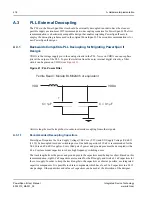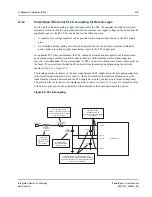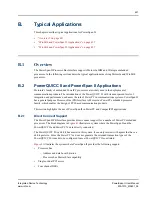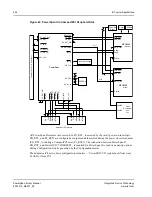
421
PowerSpan II User Manual
80A1010_MA001_09
Integrated Device Technology
www.idt.com
B. Typical
Applications
This chapter describes typical applications for PowerSpan II.
•
•
“WinPath and PowerSpan II Applications” on page 427
•
“WinPath and PowerSpan II Applications” on page 427
B.1
Overview
The PowerSpan II Processor Bus Interface supports Motorola, IBM and Wintegra embedded
processors. In the following sections describe typical applications involving Motorola and WinPath
processors.
B.2
PowerQUICC II and PowerSpan II Applications
Motorola’s family of embedded PowerPC processors are widely used in the deployment of
communications products. The introduction of the PowerQUICC II, with its unsurpassed levels of
integration and performance, enhances the role of PowerPC in communications systems. PowerSpan II
has a general purpose Processor Bus (PB) Interface to Motorola’s PowerPC embedded processor
family, which enables the design of PCI based communication products.
This section highlights the use of PowerSpan II in PowerPC and CompactPCI applications.
B.2.1
Direct Connect Support
The PowerSpan II PB Interface provides direct connect support for a number of PowerPC embedded
processors. The block diagram in
illustrates a system where the PowerSpan II and the
PowerQUICC II and PowerPC 7xx are directly connected.
The PowerQUICC II is a 64-bit bus master in this system. It can only interact with agents that have a
64-bit port size. Since the PowerPC 7xx does not generate the extended transaction types of the
PowerQUICC II, it needs to be configured to meet PowerQUICC II constraints.
illustrates the system where PowerSpan II provides the following support:
•
Processor bus
— Address and data bus arbitration
— Processor bus Master/Slave capability
•
Single or dual PCI access
•
Four channel DMA
















































